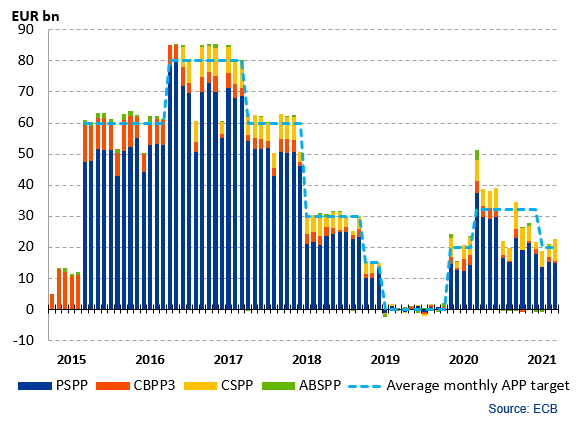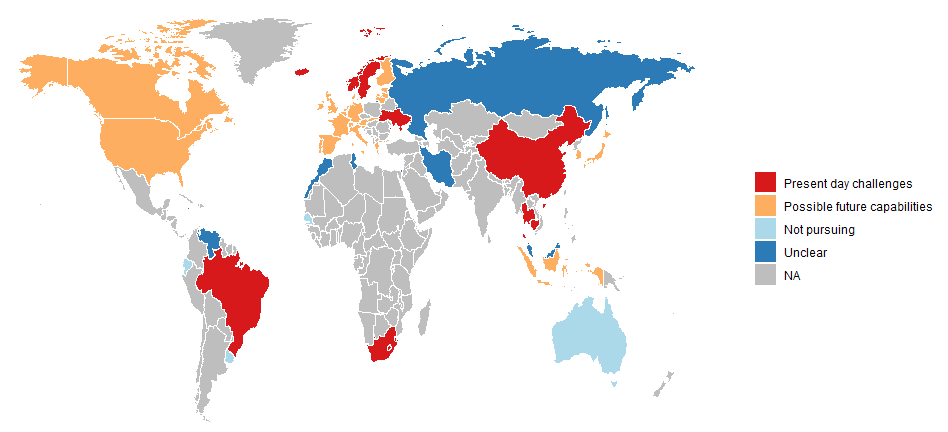Investment Strategies
Are Debt, Digital And Climate Transforming Central Banking, Broader Economy?

Central banking faces three pressing challenges: debt,
digital and climate. The author of this article thinks that such
banks will change how they conduct policy. Meanwhile, the spectre
of inflation is back, perhaps unsurprisingly after a period of
large money printing to inoculate the financial system against
heavy government borrowing. The rules of economic life haven’t
been suspended, so what does this mean? Here is Fabrizio Pagani,
global head of economics and capital markets strategy at Muzinich & Co,
to explain more.
The editors of this news service are pleased to share these
insights and we invite readers to jump into the conversation. The
usual editorial disclaimers about the views of outside
contributors apply. Email tom.burroughes@wealthbriefing.com
and jackie.bennion@clearviewpublishing.com
Central banking is facing three pressing challenges: debt,
digital and climate. We believe that the response to these
challenges by the major central banks will change the nature of
monetary policy and the role of central banking in the economy
and society at large.
Debt
Since the 2007/2008 Great Financial Crisis (GFC), central banks
have enriched the toolkit of monetary policy by introducing new
non-standard instruments and enhancing existing ones. Among these
unconventional policies, quantitative easing stands out. As
defined by Ben Bernanke, “Quantitative easing involves central
bank purchases of securities in the open market, financed by the
creation of bank reserves held at the central bank.” [1]
Major central banks have engaged in quantitative easing (QE) in the years following the GFC and have made further, massive, recourse to this instrument in response to the COVID–19 pandemic. The Federal Reserve (Fed), European Central Bank (ECB), Bank of England and Bank of Japan have all undertaken quantitative easing.
Fig. 1 – European Central Bank Asset Purchase Programmes

The graph does not include the purchases under the PEPP, the
purchase programme specifically established during the pandemic.
(PSPP – public sector purchase programme, CBPP3 - third covered
bond purchase programme, CSPP – corporate sector purchase
programme, ABSPP – asset-backed securities purchase programme,
APP – asset purchase programme.) As of 31 March 2021.
In the last decade, central bank balance sheets have grown
dramatically. For example, the amount of bonds bought by the
Eurosystem through its different programmes (APP and PEPP) stood
at around €4,000 billion in mid-April 2021. [2]
More than 75 per cent of the securities owned by the ECB are
government bonds, the purchase of which will continue at a
substantive pace until at least the end of March 2022, swelling
its balance sheet even more. Equally, in April 2021,
Fed-owned assets amounted to more than US$7700 billion, with a
striking ninefold increase since early 2008. [3]
The ECB and Fed will end up owning between 25 per cent and 30 per
cent of their governments’ debt, and the Bank of Japan over 40
per cent.
Existential questions loom over this debt, well beyond contingent
issues about the length of the extension to the current purchase
programmes. Will central banks embark on an indefinite roll over,
possibly extending the maturity? Will this debt eventually be
made perpetual or even cancelled as has been proposed? In the
case of the European Union, will the ECB progressively replace
national debt with a supranational one issued by the Commission
under programmes such as the Next Generation EU?
Each central bank has its own mandate, culture and practices and
these questions can, possibly, find narrow, technical answers
according to each jurisdiction.
However, there is a general interrogative on the long-term role
that central banks will play vis-à-vis the increasing levels of
government indebtedness and the rising amount of national debt
which they own. Perhaps we have not yet reached a time to
answer these questions fully.
Digital
In recent years, we have seen an acceleration in the pace of
digitalisation in all aspects of the economy and within society
more broadly. A technological revolution is taking place: money
could not remain unaffected. Indeed, it is not the first
time that money has undergone a radical technological
transformation and each transformation, such as from gold coins
to banknotes, has had its own challenges. There is much
confusion on the exact definition of the digitalisation of money.
It is a notion that includes different phenomena such as
electronic payment systems, the most successful being the digital
wallets of China’s WeChat and Alipay; the emerging array of fiat
cryptocurrencies, such as the popular bitcoin and “stablecoins”
on blockchain; and the possibility of central banks issuing
digital currencies.
Central banks and governments globally are considering
introducing central bank digital currencies (CBDCs), as shown in
Fig. 2: [4]

Countries have been assigned one of five categories: (1)
addressing a present day challenge, (2) exploring possible future
capabilities, (3) not pursuing research and experimentation, (4)
unclear motivations, and (5) not available.
Source: Jess Cheng, Angela N Lawson, and Paul Wong, Preconditions
for a general-purpose central bank digital currency, Feds notes,
24 February 2021
https://www.federalreserve.gov/econres/notes/feds-notes/preconditions-for-a-general-purpose-central-bank-digital-currency-20210224.htm#fig1
For some time, the Bank of International Settlement (BIS) has
been trying to find clarity and provide some early taxonomy.
[5]
Central bankers are eager to stress the difference between CBDCs
and cryptocurrencies, which they prefer to call “crypto assets”.
We believe that there is an emerging “official” view which
broadly sees digital currencies relying on a central authority
and being associated with a physical currency, such as the US
dollar or the euro. On the contrary, cryptocurrencies are
considered closer to investment than to money and are “mined” or
“produced” in a decentralised way by private players.
Reality is more complex. The development of private currencies is
possible - bitcoin could soon be accepted as a means of payment
by certain businesses. The dystopian risk of fragmentation,
multiplication and competition of currencies could soon become
real, as is the possibility of the creation of
privately-sponsored international digital currency areas across
national borders.
Facing this threat, but also with the ability to use new tools to
fulfil their mandates, central banks are more actively exploring
whether and how to create digital currencies. A recent Report on
a Digital Euro by the ECB makes a compelling case for its
pursuance. [6]
The challenge for central banks will be to combine the
fast-evolving world of digital technologies with the mandate of
stability entrusted to them and descending from their mandates.
Much preparatory work is necessary and there are numerous areas
to be solved, e.g., access, privacy, safety, anti-money
laundering, possible restrictions in use, remuneration etc.
The digitalisation of the currency opens a realm of possibilities
and its introduction could have wide ramifications. Monetary
policy could be transformed. Looking into CBDC remuneration,
effects could be manifold. For example: i) the transmission of
interest rates to household deposit rates could become more
direct; ii) the case for negative interest rates, what economists
call the “zero low bound problem” could disappear; iii)
remuneration could be tiered, with different interest rates
applied in different cases. On the latter point, which could open
fascinating policy avenues, the ECB writes that CBDC would “allow
the Eurosystem to pay less attractive interest rates on large
holdings of digital euro or on holdings by foreign investors in
order to discourage excessive use of the digital euro as an
investment or to mitigate the risk of attracting huge
international investment flows”. [7]
Obviously, the banking system will also be deeply affected, with
the possibility of a drastic disintermediation of commercial
banks.
At the current stage, no final decision of issuing CBDC has been
taken by any major central bank. In this changing and uncertain
environment, central banks - and governments - need to act and
react fast if they want to retain monetary sovereignty.
Perhaps CBDCs are becoming an inevitable necessity, on top of
being useful tools.
Climate
Climate change is a major threat to mankind. Its impact on
economic activities cannot be underestimated.
Fighting climate change appears far beyond the remit of central
banks. However, climate change has an impact on the economy,
including on financial and even price stability. [8] There
is therefore growing consensus that central banks, without being
the main actors, must play a role. This role, which is advocated
by many as part of the mobilisation of the whole of society
against climate change, could cut across monetary policy,
financial stability, prudential regulation and supervision.
Central banks are devoting resources to study climate change and
its implications for monetary policy. The Swedish Riksbank, the
Bank of England, the ECB and more recently the Fed have set up
specific processes for working groups to study the matter.
[9]
In 2017 the Network for Greening the Financial System (NGFS) was
created, which gathers over 80 monetary authorities and financial
regulators across the world. The Fed joined in December 2020. The
NGFS helps “strengthening the global response required to meet
the goals of the Paris agreement and to enhance the role of the
financial system to manage risks and to mobilise capital for
green and low-carbon investments in the broader context of
environmentally sustainable development.” [10] A recent NGFS
document provides a range of options for central banks’ action
around three axis: credit operations, collateral and asset
purchase. They are summed up in the following table [11].
Selected stylised options for adjusting operational
frameworks to climate-related risks
(1) Adjust pricing to reflect counterparties’
climate-related lending; and
(2) Adjust pricing to reflect the composition
of pledged collateral.
Make the interest rate for central bank lending facilities
conditional on the extent to which a counterparty’s lending
(relative to a relevant benchmark) is contributing to climate
change mitigation and/or the extent to which they are
decarbonising their business model.
Charge a lower (or higher) interest rate to counterparties that
pledge a higher proportion of low-carbon (or carbon-intensive)
assets as collateral or set up a credit facility (potentially at
concessional rates) accessible only against low-carbon
assets.
Footnotes
[1] Ben S. Bernanke, Monetary Policy in a new Era, Brookings
Institutions, paper prepared for conference on Rethinking
Macroeconomic Policy, Peterson Institute, Washington DC, October
12-13, 2017
[2] ECB Press Release, Consolidated financial statement of the
Eurosystem as at 16 April 2021,
https://www.ecb.europa.eu/press/pr/wfs/2021/html/ecb.fs210420.en.html
[3] Federal Reserve, Credit and Liquidity Programs and the
Balance Sheet,
https://www.federalreserve.gov/monetarypolicy/bst_recenttrends.htm,
as at 20 April 2021
[4] A 2021 BIS survey of central banks found that 86% are
actively researching the potential for CBDCs, 60% were
experimenting with the technology and 14% were deploying pilot
projects,
https://www.bis.org/about/bisih/topics/cbdc.htm?m=1%7C441%7C714%7C98,
as at 29 April 2021
[5] For example, Morten Linnemann Bech, Rodney Garratt, Central
bank cryptocurrencies, BIS Quarterly Review, September 2017.
https://www.bis.org/publ/qtrpdf/r_qt1709.pdf
[6]
https://www.ecb.europa.eu/pub/pdf/other/Report_on_a_digital_euro~4d7268b458.en.pdf,
October 2020. See also Introductory remarks by Fabio Panetta,
Member of the Executive Board of the ECB, at the ECON Committee
of the European Parliament, 14 April 2021,
https://www.ecb.europa.eu/press/key/date/2021/html/ecb.sp210414_1~e76b855b5c.en.html
[7]
https://www.ecb.europa.eu/pub/pdf/other/Report_on_a_digital_euro~4d7268b458.en.pdf,
October 2020
[8] FSB, The Implications of Climate Change for Financial
Stability, https://www.fsb.org/wp-content/uploads/P231120.pdf 23
November 2020; and Celso Brunetti, Benjamin Dennis, Dylan Gates,
Diana Hancock, David Ignell, Elizabeth K. Kiser, Gurubala Kotta,
Anna Kovner, Richard J. Rosen, Nicholas K. Tabor, Climate Change
and Financial Stability, Feds Notes, 19 March 2021
[9] Riksbank Executive Board, Sustainability strategy for the
Riksbank, 16 December 2020
https://www.riksbank.se/globalassets/media/riksbanken/hallbarhetsstrategi/engelska/sustainability-strategy-for-the-riksbank.pdf;
https://www.bankofengland.co.uk/climate-change; Lael Brainard,
Financial Stability Implications of Climate Change, 23 March 2021
https://www.federalreserve.gov/newsevents/speech/brainard20210323a.htm
[10]
https://www.ngfs.net/en/about-us/governance/origin-and-purpose,
13 September 2019
[11] NGFS, Adapting central bank operations to a hotter world.
Reviewing some options, March 2021
https://www.ngfs.net/sites/default/files/medias/documents/ngfs_monetary_policy_operations_final.pdf